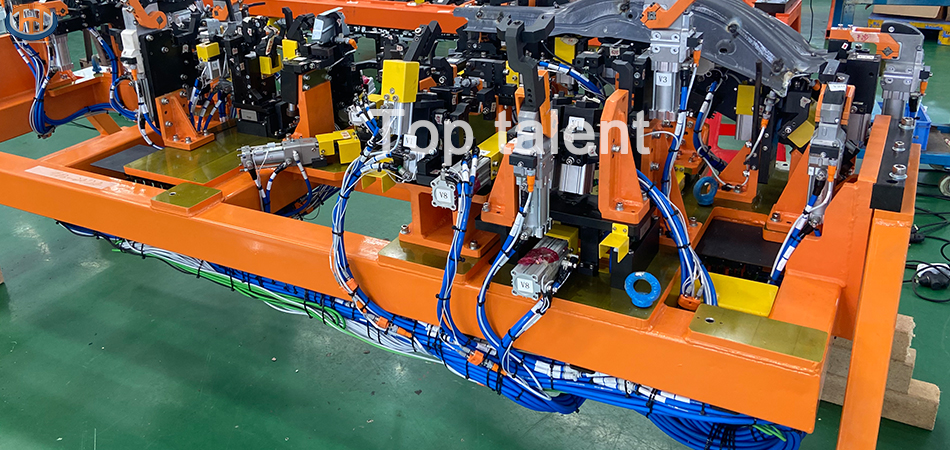Automotive welding fixtures are essential for ensuring precision and efficiency during vehicle production. However, like any mechanical system, they are prone to faults. Identifying and addressing these issues promptly is crucial to maintain high production quality and prevent costly downtime. Here’s a guide to resolving some of the most common faults encountered in automotive welding fixtures.
1. Misalignment of Components
Misalignment is a frequent problem in welding fixtures, leading to inconsistent welds and poor quality. This issue often arises from wear and tear on fixture components or improper setup. To resolve this, regularly inspect the fixture for any worn or damaged parts that may cause misalignment. Use precision measuring tools, such as dial indicators or laser alignment systems, to verify that all components are properly aligned. Implementing a routine calibration schedule for fixtures can help prevent this fault.
2. Inconsistent Clamping Force
Uneven clamping force can result in movement during the welding process, leading to weak welds or distortion of parts. To fix this, check the clamping mechanisms for wear, dirt, or air leakage (in pneumatic systems). A thorough cleaning of the fixture components and replacing any damaged or worn parts can restore the clamping force. Additionally, installing pressure sensors to monitor the force applied can help maintain consistency.
3. Improper Electrical Grounding
Electrical grounding issues can disrupt the welding process, causing poor-quality welds or even damage to the equipment. Ensure that the welding fixture’s grounding system is intact and properly connected. Inspect grounding cables for wear, corrosion, or loose connections. Regularly clean grounding points to remove any oxidation or dirt that may cause resistance.
4. Fixture Wear and Tear
Over time, welding fixtures experience wear, especially in high-volume production environments. The repeated stress can deform or loosen fixture components, impacting performance. Periodic maintenance, such as tightening screws and replacing worn parts, is necessary to prolong the life of fixtures. Investing in high-quality, durable materials for fixture construction can reduce the frequency of repairs.
In summary, addressing automotive welding fixture faults involves a combination of regular inspection, maintenance, and proper calibration. By understanding common issues and taking proactive measures, manufacturers can ensure high-quality production and prevent unexpected downtimes.
Post time: Jan-10-2025



.png)
.png)